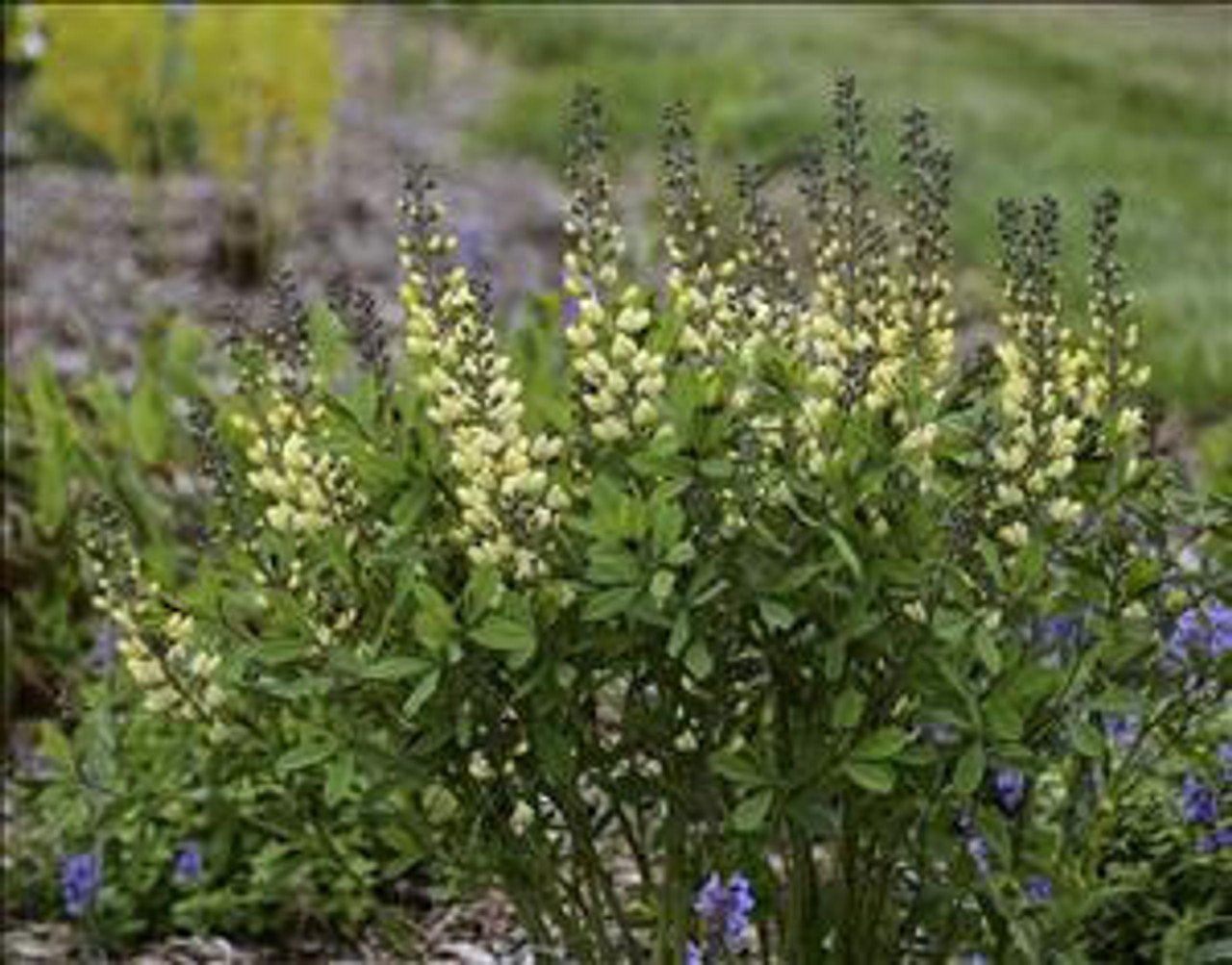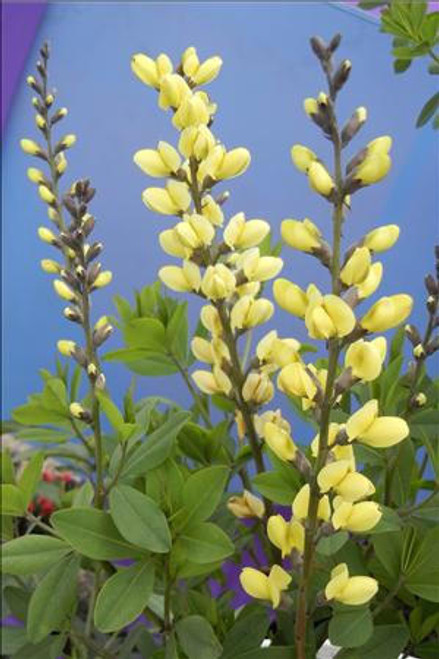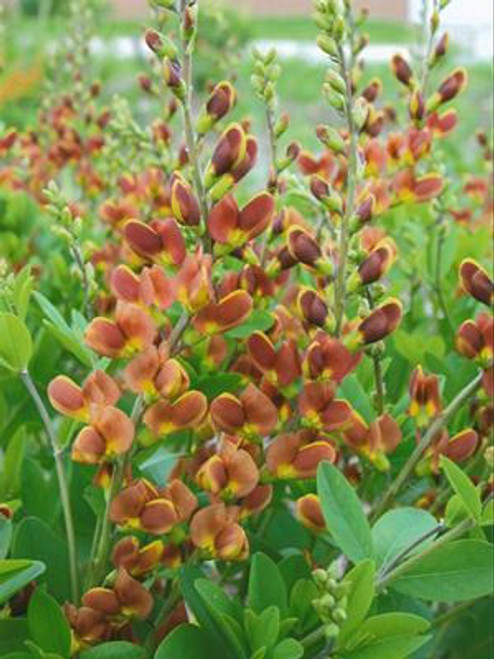Product Description
Baptisia DECADENCE 'Vanilla Cream' PP25663 (4) 1-gallons
Baptisia DECADENCE 'Vanilla Cream' is a lovely, compact variety of false indigo that is known for its beautiful creamy-white flowers and attractive foliage. It is a fantastic choice for adding vertical interest and a touch of elegance to gardens. Here is a closer look at what makes it special:
Appearance:
- Flowers: 'Vanilla Cream' features tall, elegant spires of creamy-white flowers that bloom in late spring to early summer. The flowers resemble pea blossoms and are densely packed along the stems, creating a stunning vertical display. The buds start out a pale pastel yellow, adding to the visual interest.
- Foliage: The plant has attractive, bluish-green foliage that emerges with a bronze tint in spring. The leaves are trifoliate (having three leaflets) and provide a lovely backdrop for the flowers.
Growing Conditions:
- Light: Thrives in full sun, needing at least 6 hours of direct sunlight per day for optimal flowering. It can tolerate some light shade, but flowering may be reduced.
- Soil: Prefers well-drained soil and is quite drought tolerant once established. It is adaptable to various soil types but performs best in slightly acidic to neutral conditions.
- Hardiness Zones: Hardy in USDA zones 4-9, making it suitable for a wide range of climates.
Uses:
- Borders and Beds: Its upright habit and elegant flowers make it a perfect addition to borders, beds, and cottage gardens.
- Containers: 'Vanilla Cream' can also be grown in containers, adding a touch of sophistication to patios and decks.
- Cut Flowers: The flowers make excellent cut flowers for fresh or dried arrangements.
- Pollinator Gardens: It is a great choice for pollinator gardens, attracting bees, butterflies, and other pollinators with its abundant nectar and pollen.
Additional Benefits:
- Compact Habit: Its compact size compared to other Baptisia varieties makes it ideal for smaller gardens or spaces where a larger plant might be overwhelming.
- Long Blooming Season: 'Vanilla Cream' blooms for several weeks, providing a long season of interest.
- Ornamental Seed Pods: After the flowers fade, attractive, large seed pods develop, adding further interest to the garden. The seed pods turn black when ripe and can be used in dried arrangements.
- Deer Resistant: The foliage is generally unappealing to deer.
- Low Maintenance: It is a relatively low-maintenance plant that does not require much care once established.
Overall, Baptisia DECADENCE 'Vanilla Cream' is a fantastic choice for gardeners looking for a long-blooming, low-maintenance perennial with elegant flowers and attractive foliage.
Its compact size and adaptability make it a versatile addition to any sunny garden.
(4) 1-gallon containers ready to plant, plants may be trimmed for shipping,
Other Details
The most important part of the plant is its root system. Healthy roots are the foundation of a healthy, vibrant plant. The type of plug container used is based on the specific needs of the plants. Perennials offered as bare root traditionally perform better when planted as bare root.Planted in a specialized mix, potted plants have well established root systems. Top growth stage will vary depending on the current life cycle and time of year when shipped. In Winter and early Spring dormant plants may be shipped. Dormant plants may be planted right away, even before the last frost date.
Most bare root varieties are field grown for at least one season, though Hemerocallis and Hosta are grown for two seasons. The bulk of the soil is removed during the harvesting process and the tops of most varieties are trimmed back to the crown. They are graded, packed in shredded aspen or sphagnum moss and stored in freezers until ready to be shipped.
See our Container Sizes and Bare Root Perennials pages for more information.
Plant information and care is provided in the Overview section, Plant Genus Page and general information is provided in the Planting Care & Guides. Additional questions can be asked on each Plant page.
Plant Spacing: Using the maximum mature spread or width of a plant to guide spacing, ensures space to grow to full size. To fill an area sooner, plant them closer together. Just remember, future thinning or transplanting may be needed.
Water: Keep a close eye on newly planted perennials, especially throughout the first growing year. Most early plant loss is due to too much or too little water!


















